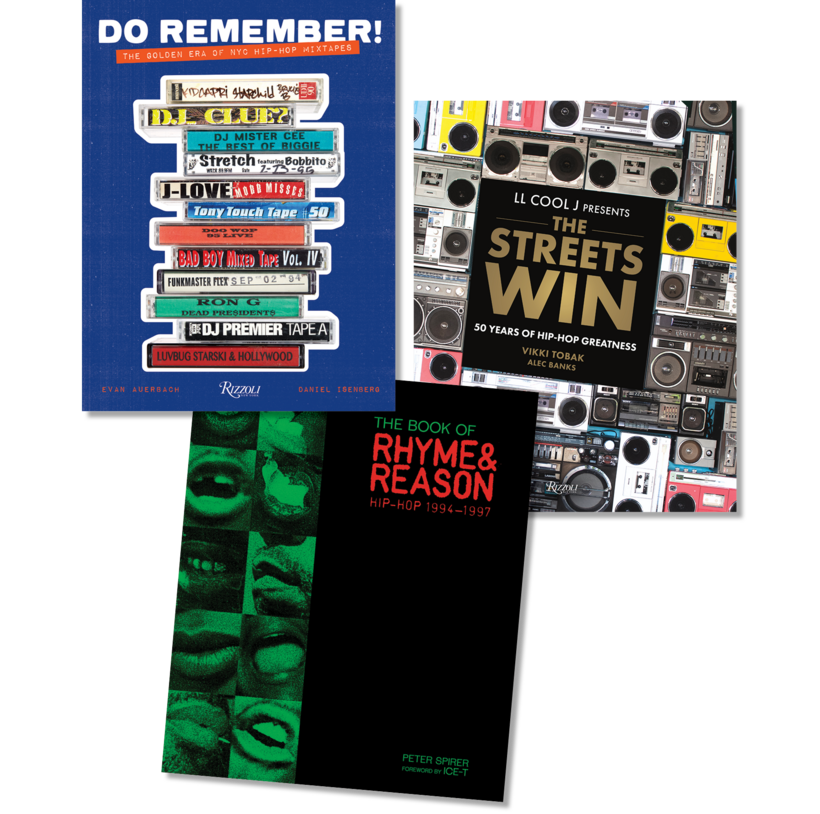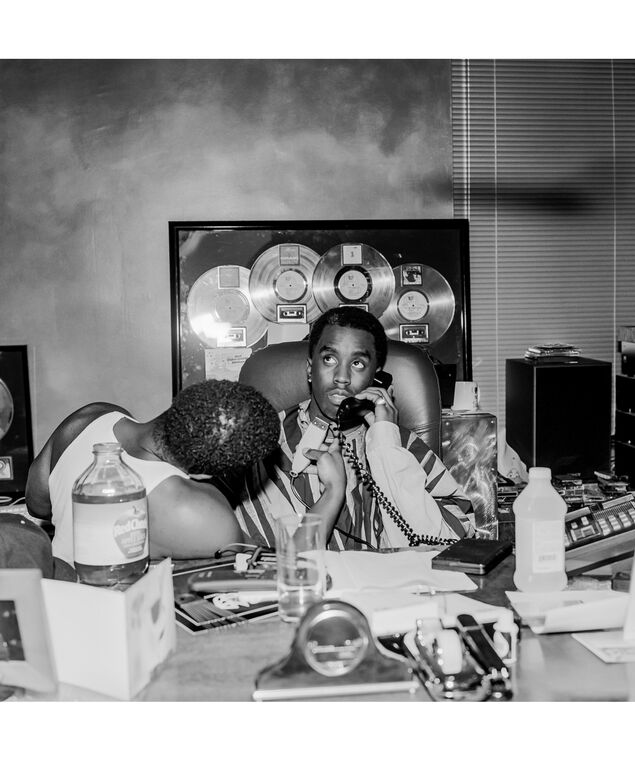When you discuss the history of hip-hop, you have to understand that hip-hop has many starts. Hip-hop had a start in gospel, had a start in jazz, had a start in blues and rock ’n’ roll, disco …
—KRS-One, from the documentary Rhyme & Reason (1997)
Contrary to popular belief, the stories of hip-hop’s “birth” are not neat or linear. The music and culture’s coming into existence is a nuanced tale of concurrences and intersections, divergences and detours. But clean, convenient narratives work better for celebration (and commodification).
For the most part, hip-hop’s 50th anniversary this year has been about convenient narratives. The anniversary is predicated on a commonly accepted and widely circulated creation myth that goes like this: Clive “DJ Kool Herc” Campbell and his sister, Cindy Campbell, ushered in the most significant popular-cultural movement of the last half-century via a back-to-school party in a Bronx, New York, rec room in 1973.
The siblings, Jamaican immigrants, rented the space at 1520 Sedgwick Avenue for Kool Herc to play an eclectic mix of songs on vinyl records—with a particular emphasis on the songs’ breakdown portions, or “breaks”—for an audience of Black and Latino youth in what was one of the nation’s most neglected and blighted areas at the time. The ripple effects would extend beyond the South Bronx, past city, state, and national boundaries, and would outlast any claim that it was a fad. The party begat a cultural revolution.
Hip-hop—the music and broader culture—is not like other genres. There’s no celebration for the birth of jazz, pop, country, or R&B, and rarely, if ever, will you hear people refer to “rock ’n’ roll culture” with fervor, whereas in the world of hip-hop, “Do it for the culture” is an oft-repeated saying. That’s because hip-hop, the product of marginalized, poor, and working-class Black and Latino/x people, means more to its adherents, like myself, than just entertainment. It is an identity and point of pride—a defiant assertion of personhood and agency in a world that would deny us those things.
But that’s also why it’s difficult to document it.
In a year filled with hip-hop-themed concerts, films, TV shows, and podcasts, three books set about the daunting task of documenting hip-hop in their pages: Do Remember!: The Golden Era of NYC Hip-Hop Mixtapes, by Evan Auerbach and Daniel Isenberg; LL Cool J Presents: The Streets Win—50 Years of Hip-Hop Greatness, by Vikki Tobak and Alec Banks; and The Book of Rhyme & Reason: Hip-Hop, 1994–1997, by Peter Spirer.
The ripple effects would extend beyond the South Bronx, past city, state, and national boundaries, and would outlast any claim that it was a fad. The party begat a cultural revolution.
The most expansive volume here is The Streets Win. Presented under the auspices of rap’s first GOAT, LL Cool J, and his Rock the Bells enterprise, it is part coffee-table book—replete with both rare and truly iconic imagery of hip-hop’s elder luminaries—and part Who’s Who reference book with contextualizing entries for each person pictured. Through a focus on the individual players and participants who gave shape to what we know today as hip-hop, it lovingly tracks hip-hop’s beginnings and development through the early 2000s. Oversize and weighty, it reflects the culture’s bombast with its scale.
However, it’s the as-told-to essays and interviews with these pivotal figures that provide the true substance of the book. For instance, the pioneering Queensbridge M.C. Roxanne Shante’s anecdote about competing against her male counterparts in a 1985 rap “Battle for World Supremacy” and making it through elimination rounds only to have it explained to her that she was given a losing score because “the best in the world of rap at the time couldn’t be from a 15-year-old girl” is a rare acknowledgement that the culture wasn’t and has never been exempt from the ills of broader society, even as it defied it.
The book isn’t reserved for rappers, covering the breadth of a culture that spans music, style, and art. Figures like innovating D.J. and technologist Grandmaster Flash, Harlem designer Dapper Dan, streetwear pioneer April Walker, dancers like Crazy Legs, party promoters like Paradise Gray, and radio personalities like Stretch Armstrong and Bobbito Garcia get their due, too.
Of particular interest is a section dedicated to the late PHASE 2, an artist to whom the culture owes much of its design aesthetic, from early flyers to album covers and record-label logos to the aerosol art (he despised the term “graffiti”) that covered the buildings and subway cars of New York City.
Hip-hop is not like other genres. It is an identity and point of pride—a defiant assertion of personhood and agency in a world that would deny us those things.
For all the illuminating first-person accounts included, there are some people conspicuously left out of the book. The complicated legacy of the D.J., artist, Universal Zulu Nation founder, and alleged child-molester Afrika Bambaataa doesn’t get any pages. Russell Simmons, co-founder of Def Jam and at one time the poster boy for hip-hop hustle and entrepreneurism, gets a similar treatment, undoubtedly due to the many allegations of sexual assault levied against him. Their omission is understandable, but it also begs the question: Can the true history of hip-hop be told without them?
The Book of Rhyme & Reason is the printed-matter companion to the somewhat obscure music documentary of the same name. Filmed in the mid-90s at a pivotal point in hip-hop’s ascent to being the dominant force in popular culture it is now, the film featured candid conversations with artists such as Method Man, Ms. Lauryn Hill, Ice-T, Da Brat, and KRS-One, among others. The book uses still photography from these shoots and quotes from these interviews to transport the reader back to that time and place.
The Book of Rhyme & Reason is strictly nostalgic. The images are beautiful and sometimes dramatic, but the context behind them is lacking. Near the end of the book, a quote appears opposite a photo of a youthful pre–Miseducation album Lauryn Hill: “People who represent, like, the establishment, they are threatened by hip-hop, and they are threatened by intelligent, articulate Black people who happen to represent you know what I’m sayin’ the poor people y’know what I mean, the have-nots.” These are powerful and punctuating words, but they would have revealed more if the prompting question and full response were included:
Interviewer: Why do you think white America, white mainstream America, is so afraid of hip-hop?
Ms. Lauryn Hill: [Smiles. Exhales] Whew, it’s funny, man. See, let me tell you, recently, I’ve been hearing these rumors that I’m a racist, and you’re not gonna find anything farther from the truth. But what I happen to think is that people who represent like the establishment, they are threatened by hip-hop, and they are threatened by intelligent, articulate Black people who happen to represent you know what I’m sayin’ the poor people y’know what I mean, the have-nots. I just love my culture, I love my people I’m proud of it, so any opportunity I get to wave it in the camera so young people like myself can see it, I do that, and I think that is looked upon as a threat, and so what happens is rumors are circulated to try and discredit or detract from me.
Despite its title, the book comes up short on the reason part of the equation.
With New York City’s early mixtape subculture as its subject, Do Remember! is narrow in its focus but deep in its exploration of hip-hop history. The book documents the evolution of the medium, the people involved, and the gray-market commerce that underpinned it.
These days, the word “mixtape” is taken to mean an unofficial but streamable compilation of songs from a recording artist, but in its earliest uses it literally translated to “a mix of songs on a cassette tape”—often a recording from a nightclub. Through interviews with legendary and foundational D.J. talents like DJ Hollywood, Brucie B, Kid Capri, and DJ Kay Slay, we learn about the medium straight from these seldom-heard-from sources. We learn how the tapes went from live recordings to home recordings, what made them coveted collector’s items and status symbols, and how they could ignite the careers of the next rap stars. (See: 50 Cent.)
Hip-hop, the product of marginalized, poor, and working-class Black and Latino/x people, means more to its adherents, like myself, than just entertainment.
It’s a trip to reminisce about the exclusivity and rarity of music in that time before digital music and the instant gratification that comes from streaming. I recall sheepishly pulling up to since-shuttered spots like Beat Street Records, in Brooklyn, or House of Nubian, in Greenwich Village, as a teenager to flip through binders of crudely designed printed track lists for mixtapes, hoping to find the one with the perfect amount of Mobb Deep songs or Boot Camp Clik freestyles on it. When commercial radio wasn’t gritty enough and it was too hard to get a good signal on underground college-radio stations, we always had our trusty mixtapes, which would dictate what was really hot on the streets.
Paradoxically, the medium that launched the professional careers of rappers and D.J.’s alike also changed the way music was made. (For instance, R&B a cappellas over hip-hop beats were a D.J. mixtape innovation that gave birth to Mary J. Blige’s and Sean Combs’s musical oeuvres.) But the stories behind the scenes haven’t been told comprehensively until now. That’s probably because, as with most histories, the task seems thorny and daunting. But these authors had the inclination to get into the weeds of the phenomenon, like a fan meticulously untangling a mangled tape because the music on it meant that much to them.
Maybe the realest, best expression of reverence for something is one’s willingness to contend with its mess, rather than pretend it’s not there.

Do Remember!: The Golden Era of NYC Hip-Hop Mixtapes, by Evan Auerbach and Daniel Isenberg, and LL Cool J Presents: The Streets Win—50 Years of Hip-Hop Greatness, by Vikki Tobak and Alec Banks, are out now from Rizzoli. The Book of Rhyme & Reason: Hip-Hop, 1994–1997, photographed by Peter Spirer, will be published on November 7 by Reel Art Press
Timmhotep Aku is a Brooklyn-based culture worker who has written and edited for Pitchfork, NPR Music,Complex, The Fader, XXL, and other publications. He is the story editor on the Signal Award–winning podcast The Blog Era, and was an associate producer of the film Kamasi Washington Live at the Apollo Theater. His Black art–inspired radio show, Subject to Change, airs monthly on London’s NTS Live















